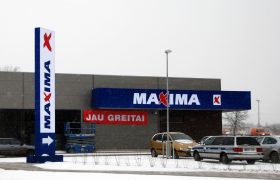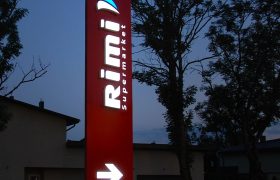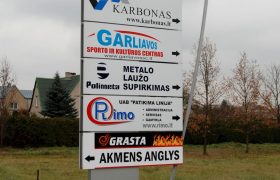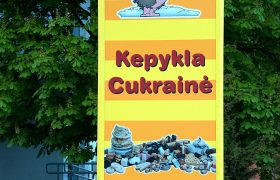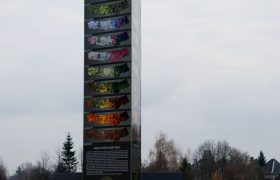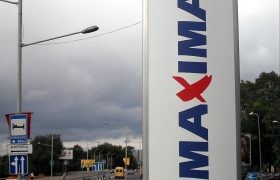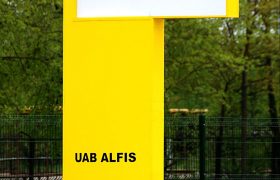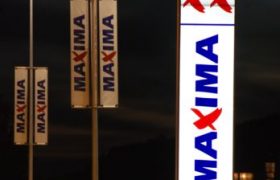One of the most common examples of advertising pylons are towers with fuel prices near petrol stations. However, they are not only used in petrol stations. They are usually mounted close to the street, entrances to the building areas – where they must contain a big amount of information (e.g. the list of companies are residing in the office building). Advertising pylons are also built in places where there are no structures of buildings on which to install the advertising.
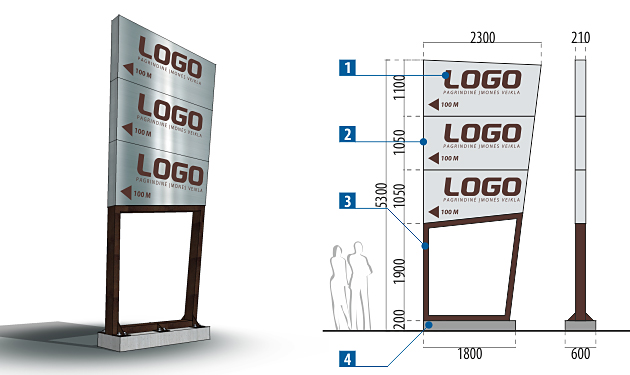
1. Logos may include:
a) digital printing stickers
b) plotterred PVC foil stickers
c) 3-D, painted (PVC or aluminium)
2. Metal frame covered with composite panels
3. Frame – metal structure (profile 100 x 200)
4. Poured concrete foundation
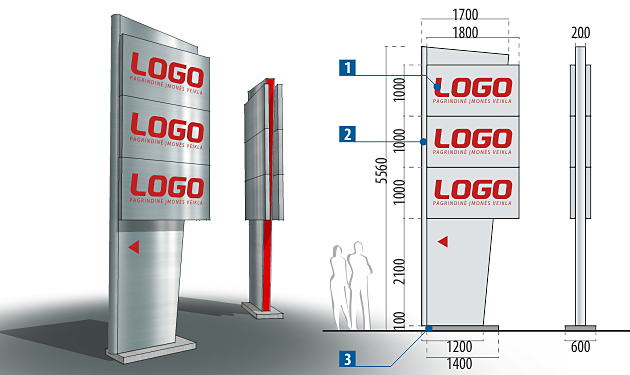
1. Logos may include:
a) digital printing stickers
b) plotterred PVC foil stickers
c) 3-D, painted (PVC or aluminium)
2. Metal frame covered with composite panels
3. Poured concrete foundation
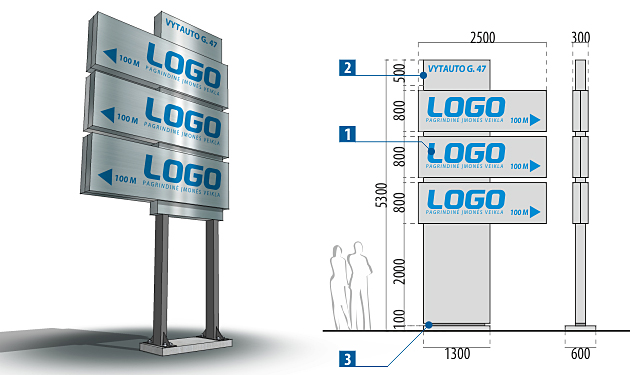
1. Logos may include:
a) digital printing stickers
b) plotterred PVC foil stickers
c) 3-D, painted (PVC or aluminium)
2. Metal frame covered with composite panels
3. Poured concrete foundation
Advertising pylons can be complex solutions designed using a variety of advertising techniques – lightboxes, illuminated or non-illuminated 3D items, electronic solutions (e.g. LED screen) Their design can be created using a variety of materials (metal, plastic, wood, glass, etc.), or surface finish (coating with various finishing materials, “aging”).
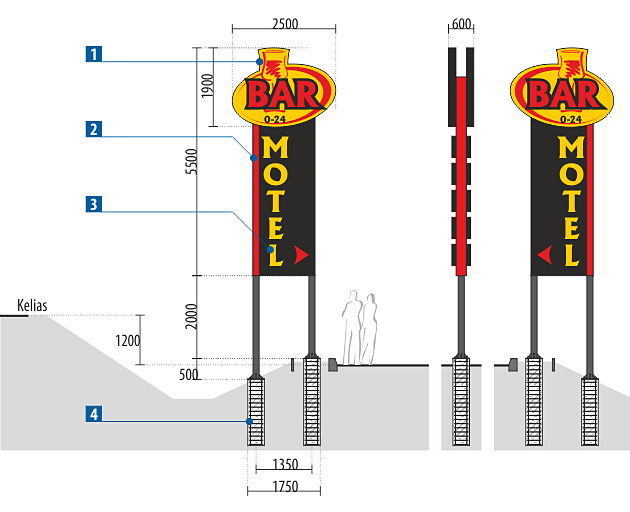
1. Lightbox may include:
a) only the letters cut in the front panel are illuminated
b) the entire front panel is illuminated
2. Non-illuminated plane
3. Letters may include:
a) not illuminated
b) only the letters cut in the front panel are illuminated
c) illuminated, 3-D
4. Poured concrete foundation
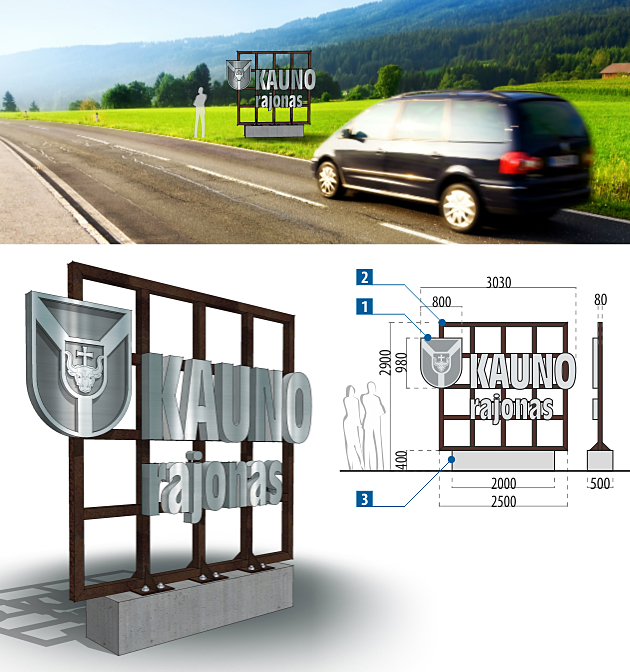
1. 3-D letters and the logo can be made of::
a) stainless steel sheet
b) composite sheet
c) PVC plastic
2. Black metal frame (80 × 80) with special aging finish – covered with materials fixing the rusty surface
3. Poured concrete foundation

